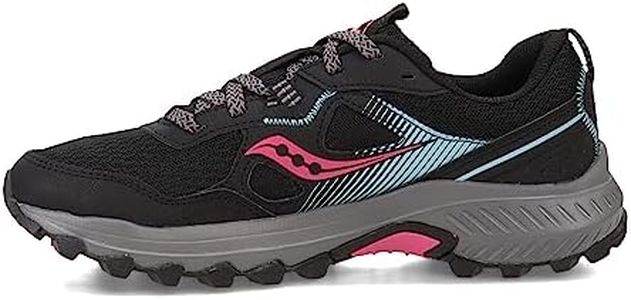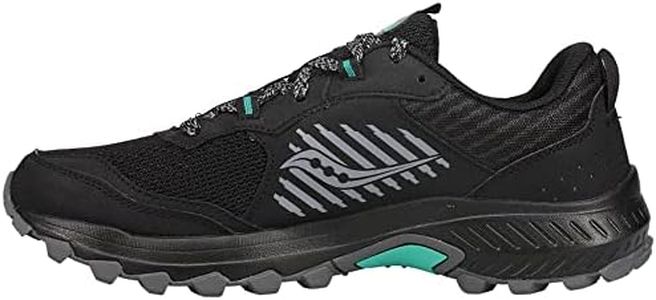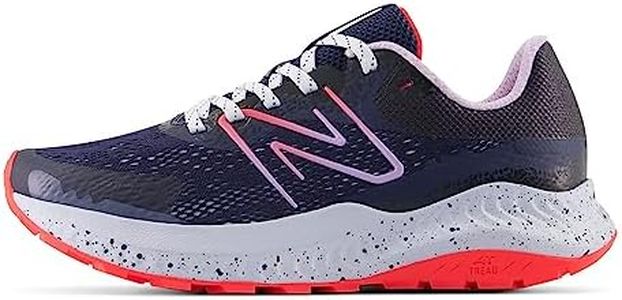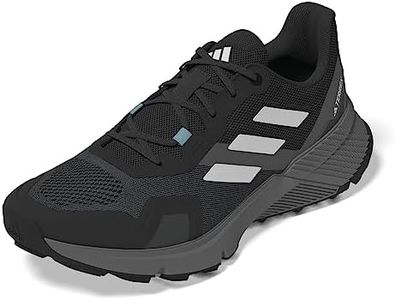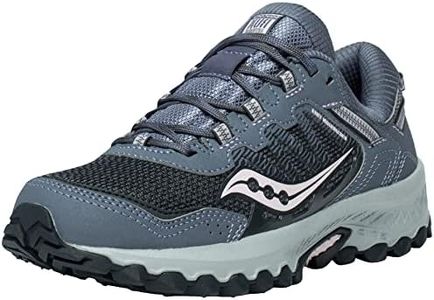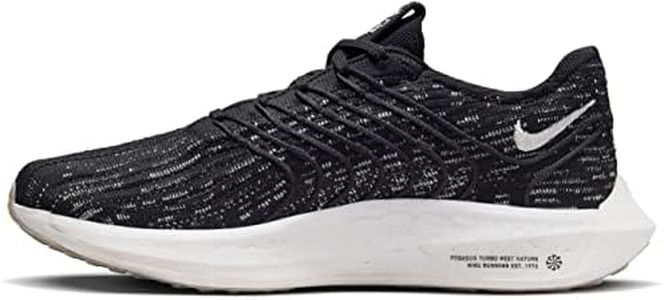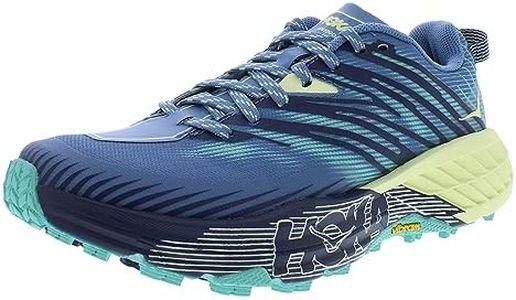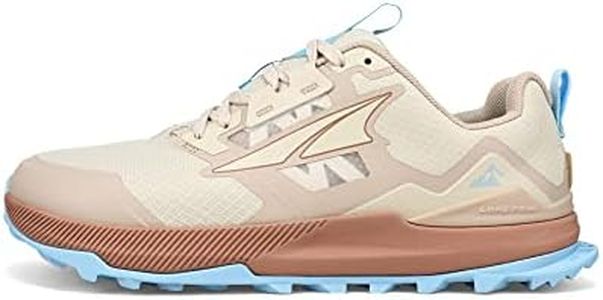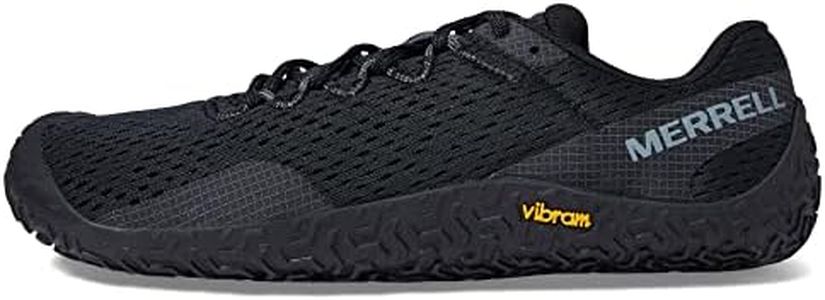We Use CookiesWe use cookies to enhance the security, performance,
functionality and for analytical and promotional activities. By continuing to browse this site you
are agreeing to our privacy policy
10 Best Womens Trail Running Shoes
From leading brands and best sellers available on the web.Buying Guide for the Best Womens Trail Running Shoes
Choosing the right women's trail running shoes is essential for comfort, safety, and performance on uneven and unpredictable terrain. Trail running shoes are designed to provide grip, protection, and support as you navigate through dirt paths, rocky trails, and muddy tracks. To find the best fit for your needs, it's important to understand the key features and how they relate to your running style, the types of trails you frequent, and your personal preferences for comfort and support.Traction (Outsole Grip)Traction refers to how well the shoe grips the ground, which is crucial for trail running where surfaces can be slippery, loose, or uneven. Shoes with aggressive, deep lugs offer excellent grip on muddy or soft trails, while shallower lugs are better for hard-packed or mixed terrain. If you mostly run on soft, muddy trails, look for shoes with prominent, widely spaced lugs. For rocky or dry trails, a less aggressive tread may be more comfortable and versatile. Consider the typical conditions of your trails to choose the right level of traction.
CushioningCushioning is the amount of padding between your foot and the ground, affecting comfort and shock absorption. Shoes with more cushioning are softer and absorb more impact, which is helpful for longer runs or if you prefer a plush feel. Less cushioning gives you a closer connection to the ground, which can improve stability and control on technical trails. If you run long distances or have sensitive joints, more cushioning might be best. For short, technical runs, less cushioning can help you feel more agile.
Fit and SupportFit and support refer to how the shoe holds your foot in place and provides stability. A secure fit prevents your foot from sliding inside the shoe, reducing the risk of blisters and injuries. Some shoes offer a snug, sock-like fit, while others have a roomier toe box for natural toe splay. If you have narrow feet or run on technical, uneven trails, a snug fit can offer better control. If you prefer comfort or have wider feet, look for shoes with a more relaxed fit. Always try on shoes with the socks you plan to wear and consider any foot issues you may have.
Protection (Toe Cap and Rock Plate)Protection features like a reinforced toe cap and a rock plate help shield your feet from sharp rocks, roots, and debris. A sturdy toe cap protects your toes from stubbing, while a rock plate is a thin, firm layer in the sole that guards against sharp objects underfoot. If you run on rocky or root-filled trails, these features are important for safety and comfort. For smoother trails, you may not need as much protection, which can make the shoe lighter and more flexible.
Water Resistance and BreathabilityWater resistance keeps your feet dry in wet conditions, while breathability allows sweat and moisture to escape, keeping your feet cool. Some shoes have waterproof membranes, which are great for wet, muddy trails but can be less breathable. Others focus on ventilation, which is ideal for hot, dry conditions. If you often run in rain or through streams, consider water-resistant shoes. For dry, warm climates, prioritize breathability to avoid overheating.
WeightWeight refers to how heavy the shoe feels on your foot. Lighter shoes are easier to move quickly in and can reduce fatigue, but may offer less protection and durability. Heavier shoes often provide more support and protection but can feel cumbersome on long runs. If you value speed and agility, look for lighter shoes. If you prioritize protection and support, especially on rough trails, a slightly heavier shoe may be a better choice.
Drop (Heel-to-Toe Offset)Drop is the difference in height between the heel and the toe of the shoe. A higher drop (8-12mm) shifts more weight to your heel, which can be comfortable for heel strikers. A lower drop (0-6mm) encourages a more natural, midfoot or forefoot strike, which some runners find helps with balance and agility on trails. If you're used to traditional running shoes, a moderate to high drop may feel more familiar. If you want to try a more natural running style, consider a lower drop, but transition gradually to avoid injury.
